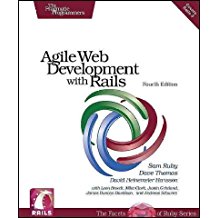Agile Web Development with Ruby on Rails: A Comprehensive Guide
This white paper explores the principles of Agile web development using the Ruby on Rails framework. We'll delve into its core concepts, benefits, use cases, and how it facilitates rapid and iterative development.
1. Agile Methodology: A Foundation for Rails
- Core Principles:
- Iterative Development: Agile emphasizes breaking down projects into small, manageable iterations (sprints) with continuous feedback and adjustments.
- Customer Collaboration: Active involvement of the client or end-user throughout the development process is crucial.
- Embracing Change: Agile recognizes that requirements may evolve, and it encourages flexibility to adapt to changing needs.
- Focus on Value: The primary goal is to deliver valuable features to the customer quickly and iteratively.
- Key Practices:
- Daily Stand-up Meetings: Brief daily meetings where the team discusses progress, roadblocks, and plans for the day.
- Sprint Planning: Meetings to plan and prioritize work for the upcoming sprint.
- Sprint Reviews: Demonstrations of completed work to stakeholders for feedback.
- Sprint Retrospectives: Meetings to reflect on the past sprint, identify areas for improvement, and adjust processes accordingly.
2. Ruby on Rails: A Framework for Agile Development
- Convention over Configuration: Rails follows the principle of "convention over configuration," meaning it provides sensible defaults and conventions, reducing the need for extensive configuration. This accelerates development and promotes consistency.
- RESTful Architecture: Rails encourages the use of RESTful principles for designing web APIs, making it easier to build scalable and maintainable applications.
- Object-Relational Mapping (ORM): Rails includes an active record ORM, which simplifies database interactions and significantly reduces development time.
- Large Ecosystem: Rails boasts a vast and active community, providing access to a wealth of libraries, gems, and resources that accelerate development.
3. Agile Web Development with Rails: A Practical Approach
- Rapid Prototyping: Rails enables rapid prototyping of web applications, allowing developers to quickly iterate and gather feedback from stakeholders.
- Test-Driven Development (TDD): Rails encourages TDD, where tests are written before the actual code. This leads to more robust, maintainable, and bug-free applications.
- Continuous Integration and Continuous Delivery (CI/CD): Rails integrates seamlessly with CI/CD tools, enabling automated testing, deployment, and continuous delivery of updates.
- Scalability and Maintainability: Rails applications are designed to be scalable and maintainable, making them suitable for both small and large-scale projects.
4. Use Cases for Agile Web Development with Rails
- E-commerce Platforms: Building online stores with features like product catalogs, shopping carts, order processing, and payment gateways.
- Social Networking Sites: Developing social media platforms with user profiles, friend connections, messaging, and content sharing.
- Content Management Systems (CMS): Creating CMS platforms for managing and publishing web content, including blogs, websites, and online publications.
- SaaS Applications: Building Software as a Service applications that are delivered over the internet, such as project management tools, customer relationship management (CRM) systems, and online collaboration platforms.
- Minimum Viable Product (MVP) Development: Rapidly developing and launching an MVP to test market assumptions and gather user feedback before investing heavily in full-fledged development.
5. Benefits of Agile Web Development with Rails
- Increased Productivity: Rails' conventions and tools significantly boost developer productivity, enabling faster development cycles.
- Improved Quality: TDD and continuous testing lead to higher-quality applications with fewer bugs.
- Enhanced Customer Satisfaction: Continuous feedback and iterative development ensure that the final product meets the customer's needs and expectations.
- Reduced Risk: By breaking down projects into smaller iterations, Agile minimizes risks associated with large, monolithic projects.
- Flexibility and Adaptability: Agile allows for changes in requirements throughout the development process, ensuring the final product remains relevant and competitive.
References:
- Agile Manifesto: https://guides.rubyonrails.org/
- Agile Web Development with Rails:
Conclusion
Agile web development with Ruby on Rails provides a powerful combination of methodologies and tools for building high-quality web applications rapidly and effectively. By embracing Agile principles and leveraging the strengths of the Rails framework, development teams can deliver innovative and successful web applications that meet the evolving needs of their customers.
Disclaimer: This white paper provides a general overview. The specific implementation and outcomes may vary depending on the project scope, team expertise, and other factors.



